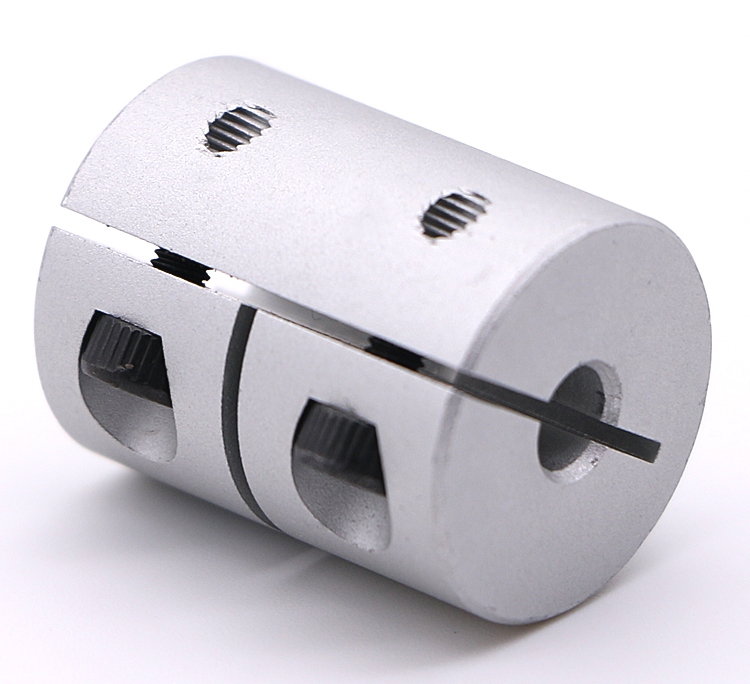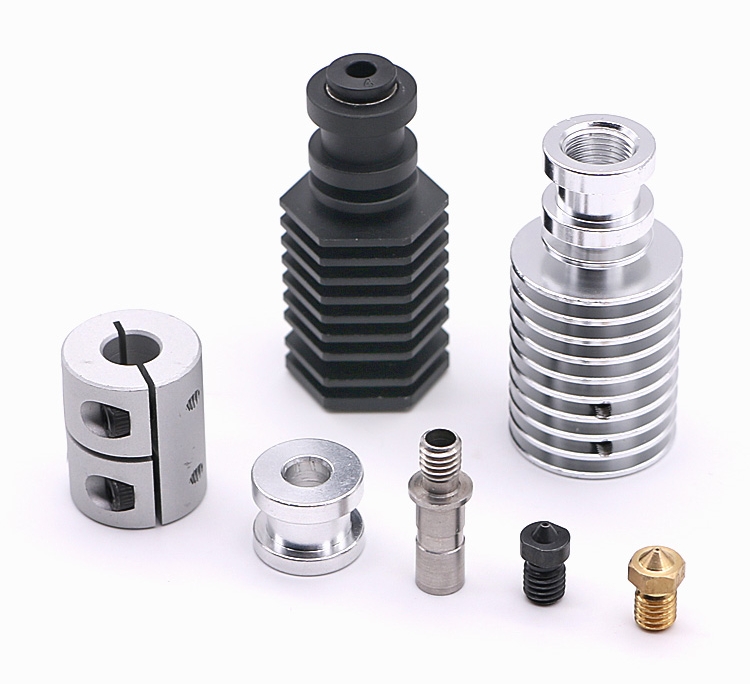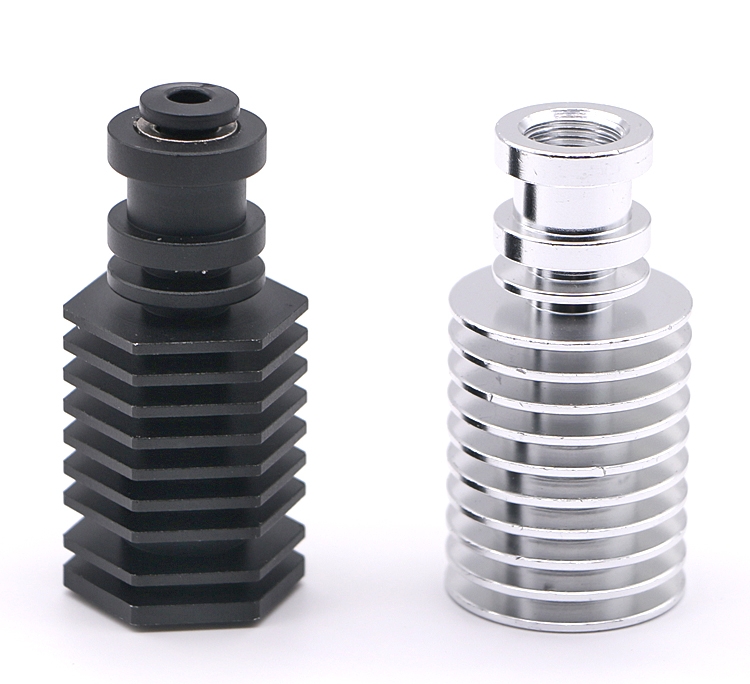What is Selective Laser Sintering (SLS)?
Numerous industries face challenges in producing durable and accurate prototypes quickly and affordably. Without a dependable solution, businesses experience costly delays, missed production deadlines, and poor-quality results. Selective laser sintering provides a reliable, high-quality method for creating strong, precise prototypes and parts.
Selective laser sintering (SLS) is an additive manufacturing (3D printing) technology that uses lasers to melt powders and produce parts in a layer-by-layer fashion.This versatile method is widely used in industries like automotive, aerospace, and medical device manufacturing for its ability to produce durable, precise prototypes and parts.
Next, we will explore how SLS works, the materials used, and its importance in modern manufacturing.
What is Selective Laser Sintering (SLS)?
Selective Laser Sintering is a 3D printing process that uses lasers to create objects from powdered material. SLS technology involves selectively sintering powdered materials using lasers to build up layers of material to create an object.
Unlike traditional methods, which often start with a solid object and carve away material, SLS is an additive process of building up material. SLS uses powdered materials such as nylon, polyamide, or even some metals. SLS provides flexibility regarding materials, design, and the types of things that can be created, making it popular across many industries.
What is the Principle of the SLS Process?
The principle of SLS is to heat powder particles to the point where they adhere to each other. An SLS machine uses a laser to scan each layer’s cross-section. Because the machine uses powder, the laser only needs to heat the particles it wants to fuse. A thin layer of powder is spread over the build platform. The laser moves the system so that it’s tracing the particular cross-section or slice. It heats the particles so they adhere to each other. It spreads a new layer of powder over the surface and processes the solid parts on top.

SLS 3D Printing Process
Printing
In SLS printing, the laser selectively heats and fuses each layer of powdered material based on a digital 3D model. The powder bed moves downward, and a new powder layer is spread over the last fused layer, repeating this process until the part is complete. This approach allows SLS to create detailed parts with fine resolution.
Cooling
Once printing is complete, the entire powder bed, including the printed part, must cool gradually to avoid warping or structural issues. The cooling phase ensures the integrity and stability of the part before extraction and handling.
Post-machining
Post-machining typically includes removing excess powder and smoothing the surface if needed. Parts are often bead-blasted or polished to improve the surface finish, although SLS prints are strong enough for functional use without extensive finishing.
SLS Machine Components
An SLS (Selective Laser Sintering) machine is comprised of several key components that collectively enable precise, high-resolution 3D printing.
Laser System:
The laser system is the heart of an SLS machine. It typically employs a CO2-based laser, known for its stability and high power output. This laser beam, under computer control, scans across the powder bed in a precise pattern, selectively sintering the powder particles to create a solid structure. The laser’s ability to focus energy precisely on small areas allows for intricate details and high resolution in the printed parts.
Build Chamber:
The build chamber is a heated enclosure where the sintering process takes place. It maintains a consistent temperature slightly below the melting point of the powder material, ensuring uniform sintering and preventing warping or distortion of the printed parts. The heated environment also helps to reduce stress in the material as it solidifies, contributing to the overall dimensional accuracy and strength of the printed components.
Powder Handling System:
The powder handling system is responsible for distributing the powder material evenly across the build platform in thin layers. It typically includes a roller or blade that smooths out the powder, creating a consistent surface for the laser to sinter. After each layer is sintered, the system recycles the unused powder back into a hopper for future prints, minimizing material waste and reducing costs.
Control System:
The control system is the brains of the SLS machine. It consists of software that controls the laser path, regulates the powder handling system, and monitors the temperature within the build chamber. This software enables users to input their design files, which are then translated into a series of instructions for the laser and powder handling system. The control system also provides real-time feedback and adjustments to ensure the printing process remains within specified parameters, resulting in high-quality prints.
Materials Compatible with SLS
SLS (Selective Laser Sintering) printing technology offers a wide range of material compatibility, making it a versatile solution for numerous applications. Here is some of the most common materials used in SLS printing:
Nylon (PA): also known as polyamide (PA), is a durable and flexible material widely used in SLS printing for functional prototypes. It exhibits excellent mechanical properties, such as high tensile strength and good wear resistance, making it suitable for parts that require durability and performance. Additionally, nylon is easy to process and can be finished with a variety of post-processing techniques to enhance its appearance and functionality.
Polyamides (PA12 and PA11): are high-performance materials often used in SLS printing for parts that require excellent chemical resistance. These materials offer good thermal stability and are resistant to a wide range of chemicals, including acids, bases, and solvents. PA12 and PA11 are also known for their good fatigue resistance and dimensional stability, making them ideal for applications in demanding environments.
TPU (Thermoplastic Polyurethane): is a flexible material that is highly suitable for SLS printing applications requiring elasticity. It exhibits excellent rubber-like properties, such as high elongation at break and good tear strength. TPU is often used for parts that need to withstand repeated flexing or bending, such as hinges, gaskets, and seals.
Metals and Ceramics: Certain advanced SLS systems are capable of handling metal and ceramic powders for high-end applications. These materials offer unique properties, such as high hardness, corrosion resistance, and high-temperature stability, making them suitable for parts that require exceptional performance. However, printing with metals and ceramics can be more challenging due to their higher sintering temperatures and the need for special handling techniques. Nevertheless, the ability to print with these materials in an SLS system greatly expands the range of applications possible, from aerospace components to medical implants.

What Type of Laser is Used in SLS?
SLS requires a specific type of laser to accurately melt and fuse powder particles. Typically, SLS machines use CO₂ lasers, which are valued for their high energy output and precision. The CO₂ laser produces a stable beam with adjustable focus, making it ideal for sintering powders like nylon and other thermoplastics. This type of laser can consistently deliver the required heat to selectively fuse particles without affecting surrounding areas, which helps reduce the chance of deformation or warping.
Selective Laser Sintering: Advantages and Disadvantages
Advantages of Selective Laser Sintering
SLS technology have some advantages for prototyping and low-volume production.
1. This technology can make it possible to build very strong, intricate designs with no additional support structures. This gives a person a lot more design freedom.
2. SLS is very cost-effective for low-volume production. Users can run very small batches without additional expense, and they won’t use much material to build the parts. The question is, “How does this compare with other manufacturing techniques?” With traditional manufacturing techniques, low-volume production tends to have a high cost-per-piece because of the materials and equipment involved. Therefore, SLS is ideal for low-volume production. It’s also great for prototypes, parts, and anything else that need to be sturdy with good mechanical strength.
Disadvantages of Selective Laser Sintering
High Initial Costs: The machines and materials are expensive, making SLS less accessible for smaller businesses.
Surface Finish: SLS parts often have a rougher surface, requiring post-processing for aesthetic applications.
Cooling Time: The cooling process can be lengthy, which may slow down production cycles.
The Best Applications for SLS
SLS is widely used across industries for applications requiring durability, precision, and customization. Common applications include:
SLS is used in many different high-performance industries. This includes the automotive, aerospace and medical device industries. These industries use SLS for rapid prototypes, end-use parts, and highly customized industrial applications.
In the automotive sector: SLS is often used to create complex engine parts, lightweight components, and ergonomic designs that benefit from the process’s precision and material flexibility.
In aerospace: SLS enables the production of strong yet lightweight parts, which is essential for improving fuel efficiency and overall performance.
For the medical device industry, SLS allows for the production of customized devices and components tailored to patient needs, such as prosthetics and implants.

What is the Difference Between SLS and SLM?
SLS and Selective Laser Melting (SLM) are both powder-based additive manufacturing techniques, but they differ in their approaches. SLS uses a laser to sinter powdered material, bonding it without melting entirely. In contrast, SLM fully melts the material, which leads to denser and stronger parts, particularly for metals. SLM is ideal for applications where part strength and density are critical, while SLS offers more material flexibility and is typically used with plastics.
What is the Difference Between Selective Laser Sintering and SLA?
Both SLS and SLA are popular 3D printing technologies, yet they differ fundamentally in materials, processes, and applications. SLS uses powdered materials and a high-powered laser, while SLA (stereolithography) relies on liquid resins that are cured by UV light to form solid objects. SLA is known for producing highly detailed parts with smooth surface finishes, making it ideal for prototypes that require intricate details and smooth textures, such as those used in the jewelry, dental, and consumer goods industries.
SLA produces smoother surfaces and is often used for highly detailed prototypes. SLS, in contrast, excels in producing functional prototypes and parts that require high mechanical strength. While both processes can create precise models, SLS is better suited for applications requiring functional strength and durability, making it more applicable for industries that need robust prototypes or parts capable of handling stress or repetitive motion.
In Conclusion
SLS provides a precise, efficient solution for manufacturing complex, durable 3D printed parts that meet the high standards of many industries. SLS has continuously demonstrated its value in fields requiring quality, flexibility, and durability, whether it is used for prototyping, low-volume production, or manufacturing end-use products.
Start your 3D printing project with SLS (Selective Laser Sintering) services and other 3D printing technologies offered by VMT. By leveraging the precision, material flexibility, and rapid prototyping capabilities of SLS, we are able to offer our customers unparalleled customization and efficiency. Our advanced 3D printing technology enables us to create complex and precise parts with a variety of properties that can be customized to specific application requirements. Contact us today to start your 3D printing project at VMT.
Frequently Asked Questions About SLS
What Laser is Used in SLS?
Most SLS machines use a CO2 laser, which is ideal for sintering polymer powders due to its wavelength and energy characteristics. The CO2 laser selectively heats and bonds powder particles together, layer by layer, to create a part.
What are the Main Materials Used in SLS 3D Printing?
Common materials for SLS include polyamides like PA12 and PA11, TPU for flexibility, and advanced powders such as metal and ceramic blends. Polyamides are particularly popular due to their durability and versatility in various applications.
How does SLS Compare to Other 3D Printing Methods Like SLA or FDM?
SLS, SLA, and FDM are distinct in their methods and materials. SLS uses a laser to fuse powder, which is ideal for durable, complex parts without supports. SLA uses a UV laser to cure resin, producing high-resolution parts, often for prototyping. FDM extrudes thermoplastic filament, making it affordable and accessible but with less precision than SLS or SLA.
Is SLS Metal or Plastic?
For the most part, it uses plastic. However, there is a metal variant on certain machines. SLS typically uses thermoplastics such as nylon, polyamide, and composite materials. Direct metal laser sintering is designed for metals. It uses a similar process but uses metal as opposed to thermoplastics. Most of the SLS 3D printers use plastics like nylon and other composite materials on these technologies. There are metal versions of SLS, often referred to as selective laser melting or direct metal laser sintering (DMLS).



